
The Centre for Ibsen Studies (Norwegian : Senter for Ibsen-studier) at the University of Oslo engages in multidisciplinary research, teaching, and documentation on the nineteenth-century Norwegian playwright Henrik Ibsen.

The Centre for Ibsen Studies (Norwegian : Senter for Ibsen-studier) at the University of Oslo engages in multidisciplinary research, teaching, and documentation on the nineteenth-century Norwegian playwright Henrik Ibsen.
The Centre was established by the university in 1991 and opened in 1993. [1] From 2000 to 2010, the Centre was housed in the Oslo Observatory, the university's oldest building. In January 2010 it moved to Henrik Wergelands hus at the Blindern campus. [2]
Documentation and dissemination of information are key aspects of the Centre’s mission. It holds a library with the world's most complete collection of books and articles relating to Ibsen Studies and maintains The Virtual Ibsen Centre. Research areas include textual studies, performance studies, reception studies, and theatre history. The Centre offers a two-year Master’s programme in Ibsen Studies, as well as a number of courses at Bachelor’s level.
Since 2007 the Centre has arranged an Annual Ibsen Lecture each fall. The Centre for Ibsen Studies also edits the international journal Ibsen Studies, which is published by Taylor & Francis. [3]
The Centre has developed extensive digital resources that are freely available online at The Virtual Ibsen Center. These resources include IbsenStage, an event-based, relational database containing data on over 20,000 performances from around the globe and from 1850 to the present. Others resources are the electronic commented edition of Henrik Ibsen's writings in the original Norwegian, open access translations of Ibsen’s works to other languages, The International Ibsen Bibliography, and an archive of related texts, images and audio recordings.
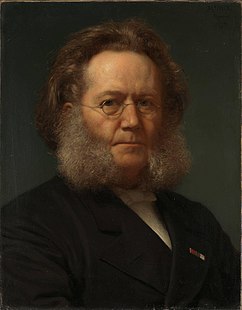
Henrik Johan Ibsen was a Norwegian playwright and theatre director. As one of the founders of modernism in theatre, Ibsen is often referred to as "the father of realism" and one of the most influential playwrights of his time. His major works include Brand, Peer Gynt, An Enemy of the People, Emperor and Galilean, A Doll's House, Hedda Gabler, Ghosts, The Wild Duck, When We Dead Awaken, Rosmersholm, and The Master Builder. Ibsen is the most frequently performed dramatist in the world after Shakespeare, and A Doll's House was the world's most performed play in 2006.
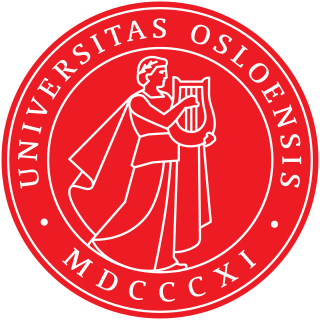
The University of Oslo is a public research university located in Oslo, Norway. It is the oldest university in Norway. The Academic Ranking of World Universities ranked it the 58th best university in the world and the third best in the Nordic countries. In 2016, the Times Higher Education World University Rankings listed the university at 63rd, making it the highest ranked Norwegian university.
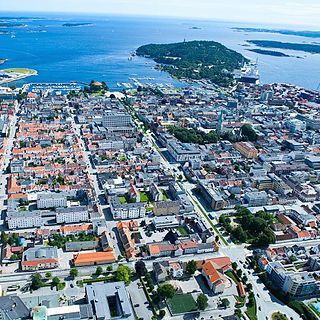
Kristiansand, historically spelled Christianssand and Christiansand, is a city, municipality and a Seaside resort in Agder county, Norway. The city is the fifth largest and the municipality the sixth largest in Norway, with a population of around 112,000 as of January 2020, following the incorporation of the municipalities of Søgne and Songdalen into the greater Kristiansand municipality. In addition to the city itself, Statistics Norway counts four other densely populated areas in the municipality: Skålevik in Flekkerøy with a population of 3,526 in the Vågsbygd borough, Strai with a population of 1,636 in the Grim borough, Justvik with a population of 1,803 in the Lund borough, and Tveit with a population of 1,396 in the Oddernes borough. Kristiansand is divided into five boroughs: Grim, which is located northwest in Kristiansand with a population of 15,000; Kvadraturen, which is the centre and downtown Kristiansand with a population of 5,200; Lund, the second largest borough; Søgne, with a population of around 12,000 and incorporated into the municipality of Kristiansand as of January 2020; Oddernes, a borough located in the west; and Vågsbygd, the largest borough with a population of 36,000, located in the southwest.
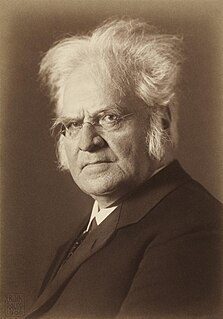
Bjørnstjerne Martinius Bjørnson was a Norwegian writer who received the 1903 Nobel Prize in Literature "as a tribute to his noble, magnificent and versatile poetry, which has always been distinguished by both the freshness of its inspiration and the rare purity of its spirit", becoming the first Norwegian Nobel laureate. He was a prolific polemicist and extremely influential in Norwegian public life and Scandinavian cultural debate. Bjørnson is considered to be one of The Four Greats among Norwegian writers, the others being Henrik Ibsen, Jonas Lie, and Alexander Kielland. Bjørnson is also celebrated for his lyrics to the Norwegian National Anthem, "Ja, vi elsker dette landet". Composer Fredrikke Waaler based a composition for voice and piano (Spinnersken) on text by Bjørnson, as did composer Anna Teichmüller.

Henrik Arnold Thaulow Wergeland was a Norwegian writer, most celebrated for his poetry but also a prolific playwright, polemicist, historian, and linguist. He is often described as a leading pioneer in the development of a distinctly Norwegian literary heritage and of modern Norwegian culture.

The Peace Research Institute Oslo is a private research institution in peace and conflict studies, based in Oslo, Norway, with around 100 employees. It was founded in 1959 by a group of Norwegian researchers led by Johan Galtung, who was also the institute's first director (1959–1969). It publishes the Journal of Peace Research, also founded by Johan Galtung.

The Cemetery of Our Saviour is a cemetery in Oslo, Norway, located north of Hammersborg in Gamle Aker district. It is located adjacent to the older Old Aker Cemetery and was created in 1808 as a result of the great famine and cholera epidemic of the Napoleonic Wars. Its grounds were extended in 1911. The cemetery has been full and thus closed for new graves since 1952, with interment only being allowed in existing family graves. The cemetery includes five sections, including Æreslunden, Norway's main honorary burial ground, and the western, southern, eastern and northern sections. The Cemetery of Our Saviour became the preferred cemetery of bourgeois and other upper-class families. It has many grand tombstones and is the most famous cemetery in Norway.
The culture of Norway is closely linked to the country's history and geography. The unique Norwegian farm culture, sustained to this day, has resulted not only from scarce resources and a harsh climate but also from ancient property laws. In the 19th century, it brought about a strong romantic nationalistic movement, which is still visible in the Norwegian language and media. In the 19th century, Norwegian culture blossomed as efforts continued to achieve an independent identity in the areas of literature, art and music. This continues today in the performing arts and as a result of government support for exhibitions, cultural projects and artwork.

The National Theatre in Oslo is one of Norway's largest and most prominent venues for performance of dramatic arts.

Christiania Theatre, or Kristiania Theatre, was Norway's finest stage for the spoken drama from 4 October 1836 to 1 September 1899. It was located at Bankplassen by the Akershus Fortress in central Christiania. It was the first lasting public theatre in Norway and the national stage of Norway and of Oslo during the 19th century.
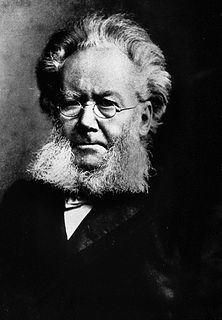
The Ibsen Museum (Ibsenmuseet) occupies the last home of the playwright Henrik Ibsen. It is located close to the Royal Palace on Henrik Ibsens gate in Oslo, Norway. The museum in Oslo is closed. According to the website, it will reopen in 2021.

The International Ibsen Award honours an individual, institution or organization that has brought new artistic dimensions to the world of drama or theater. The committee consists of figures in the theatre community.

The Norwegian Ibsen Award is awarded to promote Norwegian drama and is awarded only to playwrights.
Edda. Scandinavian Journal of Literary Research is a magazine for research on Scandinavian literature, and for literary researchers in the Scandinavian countries. The magazine is based in Oslo.

Ludvig Kristensen Daa was a Norwegian historian, ethnologist, auditor, editor of magazines and newspapers, educator and politician.

Mor Sæther, was a Norwegian "klok kone", that is, a herbalist. She is one of the best known within her profession in Norway.

Johan Anthon Abraham Fjeldsted Dahl was a Norwegian bookseller and publisher. He was a patron of the arts and was co-founder of Oslo Kunstforening.

Ibsen Studies is a peer-reviewed academic journal covering research on the playwright Henrik Ibsen. It is published biannually by the Centre for Ibsen Studies at the University of Oslo. It was originally published annually under the title Ibsenårbok by Universitetsforlaget from 1952 to 1988. From 1988 to 2000, it was published by Universitetsforlaget as Contemporary approaches to Ibsen. Since 2000, it has been published under the title Ibsen Studies by Taylor & Francis (Routledge) on behalf of the Centre for Ibsen Studies.

Henrik Urdal is a Norwegian political scientist and the current director of the Peace Research Institute Oslo (PRIO). Before his appointment as director in 2017 he was a research professor and research director at the institute. He was editor-in-chief of the Journal of Peace Research, the premier journal in the field, from 2010 to 2017.
Nora Bergliot Ibsen is a Norwegian theatrical producer, noted for being the producer of the 2006 Ibsen Year, Norway's major anniversary of playwright Henrik Ibsen's death 100 years earlier, including high profile celebrations in multiple countries. The Ibsen Year was one of the Norwegian government's major cultural undertakings in 2006, aimed at increasing appreciation of Henrik Ibsen and Norwegian culture internationally. The Ibsen Year comprised 8213 separate cultural events, and 83 countries took part in the commemoration.